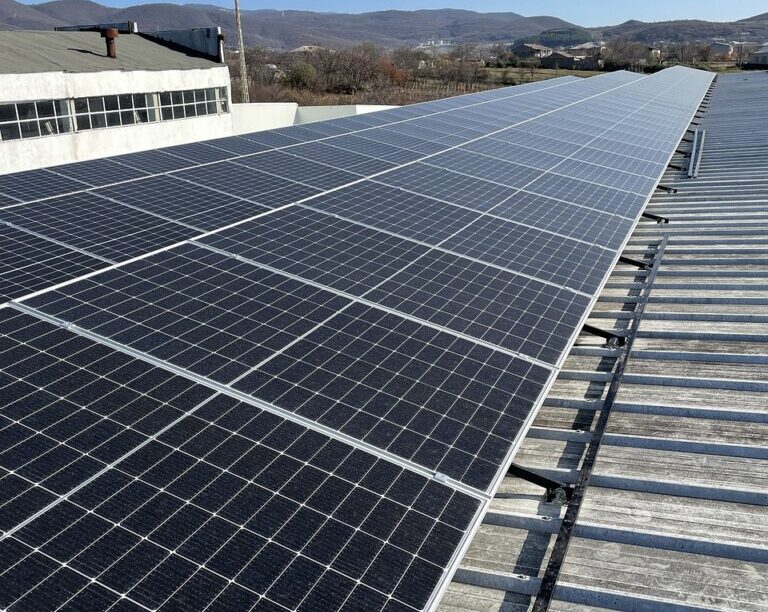During our last Climate Action call we were fortunate to be joined by Stuart Gadsden, Commercial Director at Kensa, and David Evans, Senior Design Manager at Morgan Sindall to discuss some of their projects around Net Zero Carbon.
Stuart kicked us off, exploring Kensa’s vision for a zero carbon future and the work they have undertaken to deploy Ground Source Heat Pumps (GSHPs) at scale.
What Are Ground Source Heat Pumps (GSHPs)?
A GSHP is essentially, in simple terms, a boiler that provides heating and hot water and can also provide cooling. The main difference between this form of heating and other forms is that the source of heat is from the ground, usually from closed loop, vertical boreholes. Find out how they work in more detail here.
GSHPs are becoming increasingly popular due to Net Zero targets- they have the lowest carbon emissions of any heating system and the carbon savings against a gas boiler amount to around 80%.
![]()
Kensa Case Studies
West End Primary School, constructed in 1995 was heated primarily via coal boiler which, after 30 years, was failing and needed updating. The school secured funding for GSHPs which Kensa were able to provide- 3 pumps were installed across the 3 schools buildings (kitchen, nursery and main school), using 20 boreholes across 3 arrays.
There was a small amount of further funding secured which enabled fabric upgrades such as roof insulation and window upgrades, ultimately enabling smaller GSHP systems to be implemented due to the better thermal performance of the building.
One of the big challenges with public sector buildings is the funding- without the funding there are limits upon what can be achieved.

This is evident in the second case study, Richmond Hill Primary School. Whilst GSHPs were installed, the school would also have benefitted from building upgrades but they were unable to secure funding for this.
Richmond Hill was constructing in the 1940s, with extensions in the 60s and further roof and window upgrades throughout the 2000s. The central heating system had failed 3 years before the project commenced and 33% of pupils had been moved to temporary classrooms as almost half of the school had become unusable.
Initially the team needed to work out the peak load and annual heating requirements for the school, enabling them to start on the ground design. They also conducted tests to find out what the thermal characteristics of the underlying geology were, enabling the team to optimise the ground array design to make it a perfect for the school.
Ultimately, carbon emissions from heating this school will reduce by around 75% and the estimated lifetime carbon savings of the system are 1,850 tCO2e – the equivalent to 2,046,857 pounds of coal burned. The school will also save thousands of pounds in running costs benefit from long-term financial security.
Whilst the above examples demonstrate how GSHPs can be deployed at scale on non-domestic projects, Kensa have also undertaken a number of domestic projects that can be seen on the website’s knowledge hub. One particular example is the Chadwell St Mary’s, Thurrock Council project in which GSHPs were installed on 3 high rise tower blocks. To find out more about how this was achieved, find the case study here.

Pen Y Dre High School NZC Refurbishment
David Evans, Morgan Sindall, spoke to the group about Constructing Excellence Net Zero award winner 2023, Pen Y Dre High School NZC Refurbishment.
The Pen Y Dre refurbishment was a SCL Band B project in it’s design phase when Welsh Government introduced their Net Zero Carbon policy, mandating all new build and major refurbishments meet NZC in operational targets. This project was not initially affected by this due to the business case approvals already secured, however, Merthyr Tydfil County Borough Council decided to return to stage 2 and redesign the project to meet NZC requirements. Welsh government agreed that the project would act as an example of lessons learned for future projects.

The Challenge
- Pioneering- no lessons learned to work from as it’s the first NZC school refurbishment in Wales.
- Difficulties- 1970s building with poor insulative and thermal properties.
- Cost- demonstrating value for money regarding NZC refurbishment compared to NZC new build.
- Live school- the school remained live during the process.
- Construction- working with the goal of retaining as many building elements as possible to support embodied carbon savings.
- Existing Grid- National Grid unable to take back large volumes of PV generated electricity.
The Approach

As Welsh Government did not make specific mandates about how to achieve NZC, the Pen Y Dre project team had a blank slate to work from. They began with a Whole Life Carbon approach looking at Operational Energy and Embodied Carbon. This led them to the implementation of a fabric first approach in order to improve the thermal performance of the building.
An Environmental Specialist was employed to give appraisals throughout the process and support with the decision-making around the different materials that would be used on the refurbishment. Considering the specialist’s recommendations, as well as exploring the statistics around potential carbon savings from a range of scenarios, the project finally ended up with a net zero carbon refurbishment, with air source heat pumps and photovoltaics. This gave the lowest whole life global warming impact output.
The Energy Dilemma
Air Source Heat Pumps (ASHPs) are known to be energy hungry so the team needed to find a solution that would not result in increased energy bills for the school. They found the best solution to be a PV array system of around 4500 square metres of PV panels which would provide the energy needed to run the ASHPs. However, in the summer, when the school would be closed, the PV system would be generating more energy than could be used or returned to the Grid.

This presented an opportunity to work alongside the local hospital, located next to the school, which used high levels of electricity but did not have the capacity for PV panels. Therefore, the Pen Y Dre Refurbishment team have worked with the local authority and local NHS Trust to make plans to install a private wire from the school’s PV array across to the hospital, enabling the hospital to use the school’s excess electricity.
Lessons Learned
- Structural condition survey should be undertaken on all existing buildings considering a NZC retrofit to establish viability.
- Take a whole life carbon approach
- Evaluate energy consumption from the outset- continually challenge and refine
- Take a site-wide approach to energy management
- Developing a decentralised energy strategy/ private wire connections
- Implement lessons learned from Phase 1 to future phases
- Post occupancy evaluation per phase to inform the building usage for future phases.

Get Involved
Why not get involved? Let us know if you’ve got any ideas about engaging with this group, or any of our others, and take a look at our events page to find out about our upcoming events.




